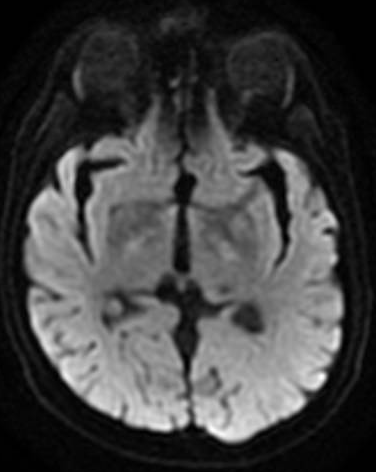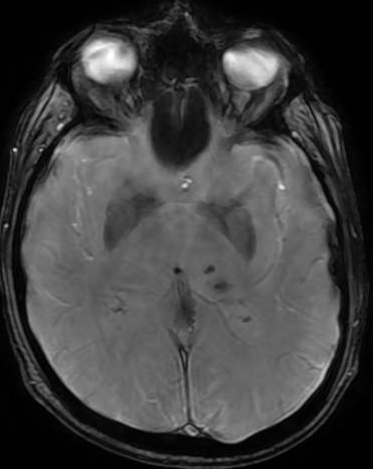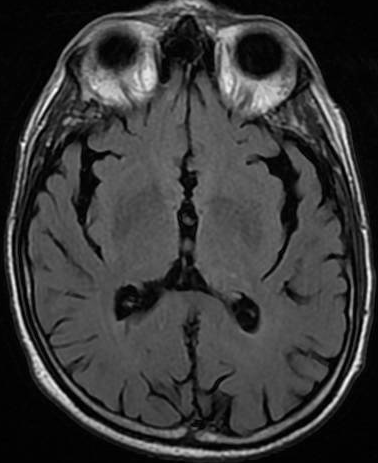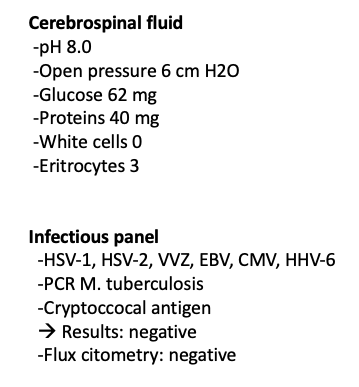Category: Myoclonus
Objective: Describe a clinical vignette about toxicity by ifosfamide in a man with follicular lymphoma (FL) that presented myoclonus and altered consciousness six hours after treatment.
Background: Myoclonus induced by ifosfamide is a relative common movement disorder in cancer-patients under chemotherapy. However, the literature describes the case-report series, and the actual incidence is unknown.
Method: A 77 years-old man with an FL under treatment with modified EPOCH-R therapy (ifosfamide 5000 mg/m2 instead of cyclophosphamide) arrived at the emergency room (ER) because he presented an acute tremor in the right hand that was disseminated to the rest of the body, with more affection in trunk, head, neck and tongue locations. Interestingly, the phenomena have been presented when the patient sleeps.
Results: The neurological exam showed hyperkinetic, non – rhythmic, briefs, paroxistics episodic, and long amplitude movements in the hands, feet, tongue, lips, and neck classified as myoclonus. Other findings were inattention, poor concentration, and length-dependent neuropathy.
An EEG does not show abnormalities. In the MRI brain scan, residual left thalamic hemorrhage in gradient echo t2-weighted as seen without a clinical correlation. A lumbar puncture was performed that revealed a cerebrospinal fluid (CSF) with normal glucose, proteins, white cells absents, and high lactate levels (3.5 mmol). Flow cytometry and infectious panel were negative. Levetiracetam (LEV) and clonazepam (CLZ) were started and sustained by four months with symptoms improvement and remitted.
Conclusion: Acute myoclonus in the scenario of cancer-related therapies must be high suspicion of central nervous toxicity and should be identified by non-neurologist physicians at the ER.
By the way, oncologists need to reduce or adjust the total doses of the therapy because the range of toxicity or poison is narrow, and remember the acute consequences in the patients. Also, it is necessary to considerer the effects on the quality of life and daily basic activities that would be worsening in these patients. On the other hand, the symptomatic treatment of choice described is methylene blue. However, LEV and CLZ are high-quality-evidence therapies that raise the remission of the myoclonus in adjuvance with the chemotherapy decrease.
References: 1. Savica R, Rabinstein AA, Josephs KA. Ifosfamide associated myoclonus-encephalopathy syndrome. J Neurol. 2011 Sep;258(9):1729-31. doi: 10.1007/s00415-011-5990-4.
2. Vakiti A, Pilla R, Alhaj Moustafa M, Joseph JJ, Shenoy AG. Ifosfamide-Induced Metabolic Encephalopathy in 2 Patients With Cutaneous T-Cell Lymphoma Successfully Treated With Methylene Blue. Journal of Investigative Medicine High Impact Case Reports. January 2018. doi:10.1177/2324709618786769.
3. Taupin D, Racela R, Friedman D. Ifosfamide chemotherapy and nonconvulsive status epilepticus: case report and review of the literature. Clin EEG Neurosci. 2014 Jul;45(3):222-5. doi: 10.1177/1550059413500777.
4. Ames B, Lewis LD, Chaffee S, Kim J, Morse R. Ifosfamide-induced encephalopathy and movement disorder. Pediatr Blood Cancer. 2010 Apr;54(4):624-6. doi: 10.1002/pbc.22361.
To cite this abstract in AMA style:
D. Rebolledo García. Myoclonus – encephalopathy induced by ifosfamide in a Non-Hodgkin lymphoma patient [abstract]. Mov Disord. 2022; 37 (suppl 2). https://www.mdsabstracts.org/abstract/myoclonus-encephalopathy-induced-by-ifosfamide-in-a-non-hodgkin-lymphoma-patient/. Accessed March 29, 2025.« Back to 2022 International Congress
MDS Abstracts - https://www.mdsabstracts.org/abstract/myoclonus-encephalopathy-induced-by-ifosfamide-in-a-non-hodgkin-lymphoma-patient/




